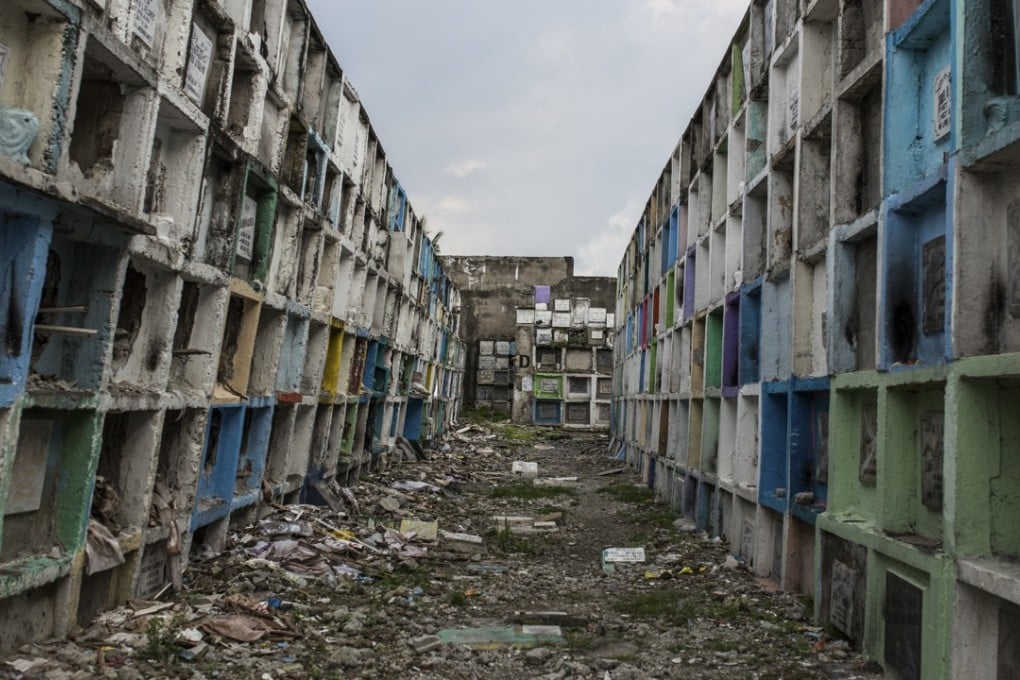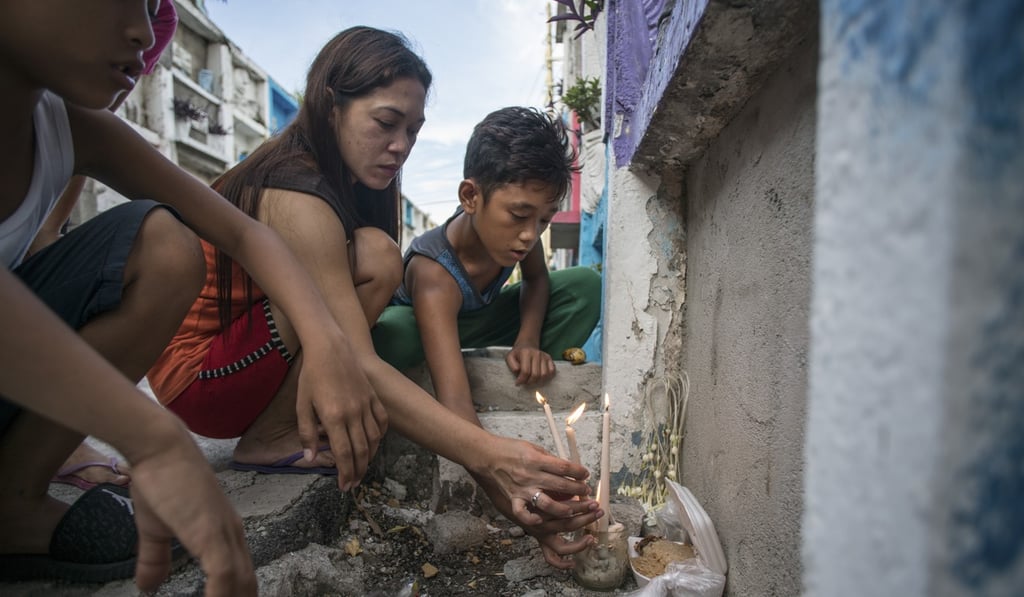Manila’s ‘apartment tombs’, where the poor bury their dead – until the contract ends
Manila’s rental ‘apartment tombs’ offer a temporary solution to families unable to afford a permanent plot to bury their loved ones. But what happens when the five-year term expires?

It’s an early July evening in Metro Manila, the temperature finally dipping from sweltering to almost tolerable, and Susan Aguirre is visiting Pasay City Public Cemetery, 40 days after her mother, Virginia, succumbed to a heart attack, at the age of 76. Aguirre has come to offer atang, food or drink for the dead.
Amid the hubbub (children playing, distant stereos blaring, dogs yapping) and smells (burning rubbish, sweat-soaked bodies, human and animal waste), she places a container of sticky rice on the ledge in front of her mother’s small, box-like enclosure, on the lower level of a wall of “apartment tombs”, each about the size of a small refrigerator tipped on its side. Sticky rice was her mother’s favourite, Aguirre says.
There are four burial niches on top of Virginia’s, and the wall of apartment tombs stretches for tens of metres, down a gravel lane that gradually narrows into a footpath. Behind “the wall, Light Rail Transit trains clip slowly by.

Some of the human inhabitants take care of the mausoleums and tombs on behalf of their owners, keeping them neat and tidy, ensuring nothing is stolen. In the absence of a caretaker, everything from the candles (the wax can be sold for a few pesos a kilogram) to the wrought-iron gates is liable to go missing.
Caretakers also tend to the apartment tombs. Unlike more elaborate burial structures, which are bought and owned in perpetuity, apartment tombs can only be rented for five-year terms, after which the bones of the deceased will be evicted. Then there are two options: the bone box, a concrete ossuary not much bigger than a large shoe box; or the rice sack, labelled with the surname of the dead and tossed on to a tumbling pile in a tin and breeze-block shed at the rear of the cemetery.